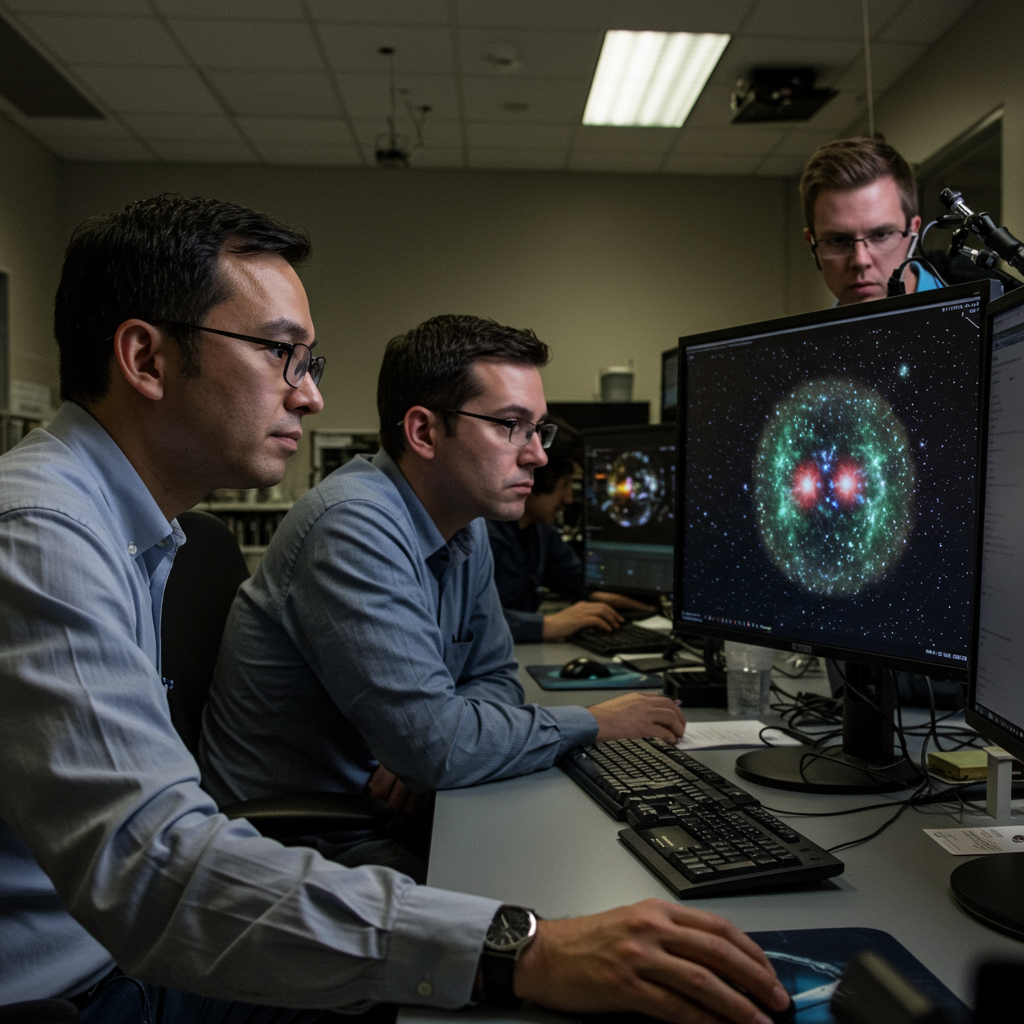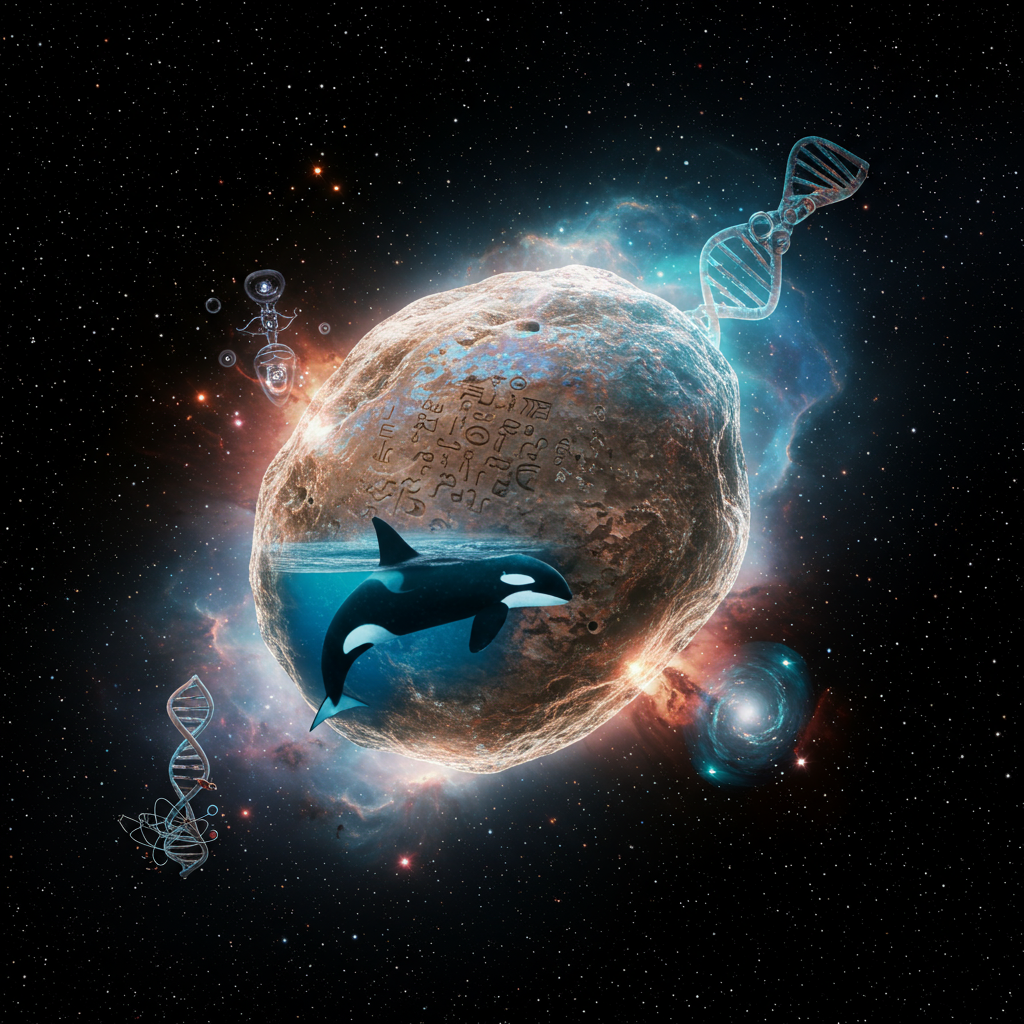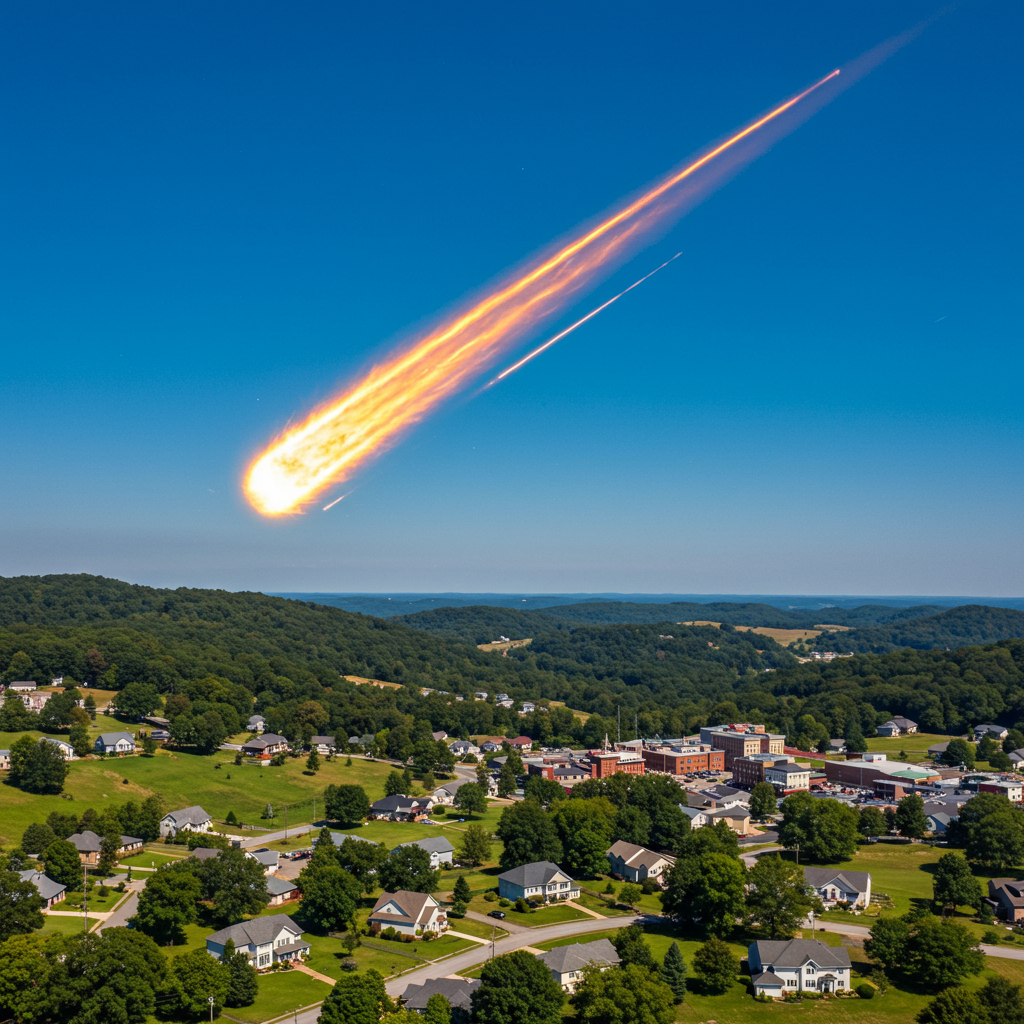A celestial first: Astronomers have captured compelling visual evidence proving that a dead star can explode not just once, but twice. This groundbreaking discovery provides the first direct image confirmation of a rare stellar phenomenon known as a “double detonation.” It’s shaking up long-held ideas about how certain types of supernovas occur, particularly those used as cosmic benchmarks to measure the vast distances across the universe.
For years, scientists suspected that some white dwarf stars might detonate in a two-step process. Now, looking at the debris field of an ancient star explosion, researchers have found the distinctive “fingerprint” left behind by such a double blast. This tangible evidence doesn’t just solve an astronomical mystery; it offers a stunning glimpse into the violent and complex life cycle of stars.
A Glimpse into Cosmic Wreckage
The subject of this remarkable observation is the supernova remnant SNR 0509-67.5. This is the lingering wreckage of a star that met its explosive end centuries ago. It resides approximately 160,000 light-years away within the Large Magellanic Cloud. This is a small satellite galaxy orbiting our own Milky Way.
Using the powerful Very Large Telescope (VLT) located in Chile, specifically its Multi Unit Spectroscopic Explorer (MUSE) instrument, a team of astronomers was able to examine the elemental composition and structure within this remnant with unprecedented detail. Their investigation didn’t just show a chaotic cloud of gas; it revealed a specific, organized pattern within the debris. This pattern is precisely what theoretical models predicted for a double-detonation event.
White Dwarfs and Type Ia Supernovas
To understand the significance of this finding, we first need to talk about white dwarfs. These are the incredibly dense remnants left behind after a star like our Sun exhausts its nuclear fuel and sheds its outer layers. A white dwarf is essentially the burnt-out core, packed into an object roughly the size of Earth.
Most supernovas result from the collapse of much more massive stars. However, white dwarfs can also explode in a particular type of supernova called a Type Ia supernova. This typically happens when a white dwarf exists in a binary system. It orbits another star, from which it can “steal” material.
The Traditional View: Reaching the Limit
The long-standing theory for Type Ia supernovas involves this material transfer. As the white dwarf siphons gas from its companion, its mass gradually increases. If it accumulates enough mass to reach a critical point—about 1.4 times the mass of our Sun, known as the Chandrasekhar limit—thermonuclear fusion ignites catastrophically in its core. This single, powerful explosion obliterates the star.
Type Ia supernovas are incredibly important to astronomers because they are thought to explode with a consistent peak brightness. This makes them invaluable “standard candles.” By comparing their observed brightness to their known intrinsic brightness, astronomers can calculate their distance. This tool has been vital for measuring cosmic distances and charting the expansion rate of the universe, including the discovery that expansion is accelerating.
The Double-Detonation Theory Emerges
Despite their utility as standard candles, the exact triggering mechanisms for Type Ia supernovas have puzzled scientists. Not all observations perfectly fit the single-detonation, Chandrasekhar-mass model. This led theorists to propose alternative scenarios. One such scenario is the “double detonation.”
This theory suggests an explosion can occur before the white dwarf reaches the Chandrasekhar limit. It still involves a binary system and accretion. However, in this model, the white dwarf accretes a layer, often helium-rich, onto its surface instead of directly into its core.
The Two-Step Ignition
The double-detonation process unfolds in two distinct steps:
- First Detonation (Surface): The accumulated helium layer on the white dwarf’s surface becomes unstable. It ignites in a thermonuclear runaway, causing a first, relatively weaker explosion on the star’s outer shell.
- Second Detonation (Core): This initial surface detonation generates a powerful shockwave. This shockwave travels inwards through the white dwarf’s structure. Upon reaching the dense core, the shockwave compresses the material, triggering a much larger, second thermonuclear detonation—the main supernova explosion.
This two-step process is predicted to leave a very specific pattern in the resulting supernova remnant. Material ejected during the first detonation would form an outer shell, while material from the second core detonation would form an inner structure. Scientists specifically predicted finding two concentric shells of certain elements, like calcium, in the debris.
Visual Proof: Calcium Rings in the Sky
The recent observations of SNR 0509-67.5 provided the crucial, missing piece of the puzzle. Using the VLT’s capabilities, the astronomers were able to map the distribution of elements within the remnant. Lead author Priyam Das and the team found exactly what the double-detonation theory predicted: two distinct, concentric rings composed primarily of calcium.
Seen in the image data, these calcium shells act as the visual confirmation of the double ignition events. The outer ring corresponds to material ejected during the initial helium layer detonation. The inner ring represents material blown outwards by the subsequent core explosion. As co-author Ivo Seitenzahl noted, seeing these two rings is compelling evidence that white dwarfs can explode well before reaching the Chandrasekhar mass.
This visual ‘fingerprint’ in the supernova wreckage validates the theoretical model. It shows that the double-detonation mechanism is not just a hypothetical possibility but a real phenomenon occurring in the universe.
Implications for Cosmic Measurements
Confirming the existence of the double-detonation pathway has significant implications for astronomy and cosmology. It confirms that Type Ia supernovas can originate from stars below the Chandrasekhar limit via this alternative route. This adds complexity to our understanding of these events.
Crucially, it impacts the reliability of Type Ia supernovas as “standard candles.” For them to be perfectly uniform distance markers, all Type Ia supernovas would ideally explode via the exact same mechanism with the exact same intrinsic brightness. If there are multiple pathways—the traditional single detonation and this newly confirmed double detonation—it’s possible these different processes could result in slightly different brightness outputs.
Understanding these different explosion mechanisms is therefore essential for calibrating Type Ia supernovas accurately. This work helps astronomers refine their models. More precise calibration could help resolve current discrepancies in measurements of the universe’s expansion rate, known as the Hubble tension. This is a major puzzle in modern cosmology. Type Ia supernovas are also primary cosmic factories for iron and other heavy elements. Better understanding their explosions improves our models of how these elements are dispersed throughout galaxies.
In addition to its scientific value, the observation provides a powerful visual representation of a complex cosmic event. The image of the structured remnant offers a beautiful, tangible connection to the violent processes shaping the universe.
Frequently Asked Questions
What is a “double-detonation” supernova?
A double-detonation supernova is a specific type of explosion involving a white dwarf star in a binary system. Instead of one massive explosion when the star reaches a critical mass, it involves two sequential thermonuclear ignitions. First, a layer of accreted helium on the star’s surface detonates. This surface blast creates a shockwave that travels inward, triggering a second, much larger detonation in the star’s core, resulting in the main supernova.
How did astronomers find evidence of this explosion?
Astronomers used the Very Large Telescope (VLT) and its MUSE instrument to study the supernova remnant SNR 0509-67.5. They analyzed the distribution of elements within the centuries-old debris. By mapping elements like calcium, they found a distinctive pattern of two concentric rings. This specific structure matches theoretical predictions for the debris left behind by a star that underwent a double-detonation process, providing the first direct visual proof.
Why are Type Ia supernovas important for understanding the universe?
Type Ia supernovas are crucial because they serve as “standard candles.” They are thought to explode with a consistent peak brightness, regardless of their distance. This allows astronomers to measure vast cosmic distances by comparing the supernova’s apparent brightness to its known intrinsic brightness. This technique was key to discovering the accelerating expansion of the universe. Understanding the precise mechanisms, like double detonations, ensures their accuracy as distance indicators and helps resolve puzzles like the Hubble tension.
Conclusion
The first visual confirmation of a star exploding twice marks a significant moment in astronomy. By observing the distinctive calcium shells within the supernova remnant SNR 0509-67.5, astronomers have provided compelling evidence for the double-detonation mechanism in white dwarf stars. This discovery challenges the idea that Type Ia supernovas only occur when a star reaches the Chandrasekhar limit. It opens new avenues for refining our understanding of these crucial cosmic events. This will ultimately improve our ability to measure the universe’s scale and expansion, bringing greater clarity to some of cosmology’s biggest questions. It also serves as a powerful reminder of the complex and awe-inspiring processes unfolding across the cosmos.




